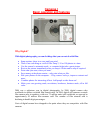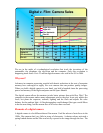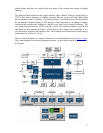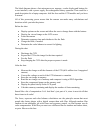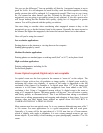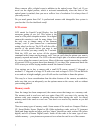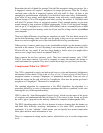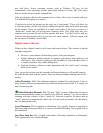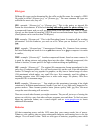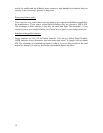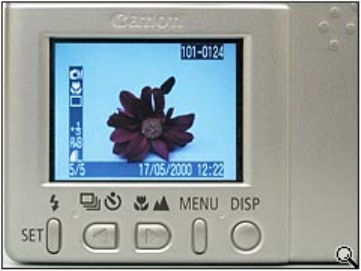
7
Many cameras offer a digital zoom in addition to the optical zoom. That’s ok. If you
never use the digital portion, which is activated automatically when the limit of the
optical zoom is reached, then you never suffer a loss of resolution. It is always there if
you really need it.
Do you need greater than 10x? A professional camera with changeable lens system is
your best bet. Get the checkbook ready!
LCD screen
LCD stands for Liquid Crystal Display. Are the
acronyms getting to you yet? This screen is the
same as a flat panel computer monitor. On a digital
camera this monitor is used for many things. It is
the only way to change many of the cameras
settings, even if your camera has a mechanical
setting wheel on the top. The LCD will also offer a
preview of the picture before you snap it, and
review of it after you snap, usually for 2 seconds.
With the LCD you can review all the pictures
contained in the camera on the memory card. You can verify that the picture you want is
properly exposed and stored. The LCD is the most fragile part of a camera not protected
by a cover when the camera is not in use. Many of the more rugged cameras have smaller
or recessed LCDs to protect them from damage. If you drop your camera and break the
LCD screen you will be buying another camera: the camera is ruined.
Your options are to buy a camera with a small LCD screen, around 1” diagonal, a
medium 1.5” diagonal or a large LCD with a two inch or larger LCD. LCDs are difficult
to see and use in bright sunlight; you will still use the viewfinder to frame the picture.
This may be a lesser consideration than the other features of the camera, nevertheless,
make sure that you can adequately see the options menu on the screen, with or without
your reading glasses!
Memory cards
Once the image has been compressed, the camera stores that image on a memory card.
The memory card is used over and over again. Once full, you erase it by moving the
pictures onto your computer or printing them and then erasing the card. An erased
memory card is the same as a new one. You don’t ever need to buy another as you did
with film.
There are many types of memory cards. Some names of the cards are Compact Flash or
CF, Smart Media, Secure Digital or SD. Older technology cards, such as CF (compact
flash) and Smart media are larger, and less “dense” than newer cards, such as SD (secure
digital) and xD (eXtreme Digital) cards. Inside all the cards is the same type of non-
volatile memory – your pictures are preserved even when the card is out of the camera.



